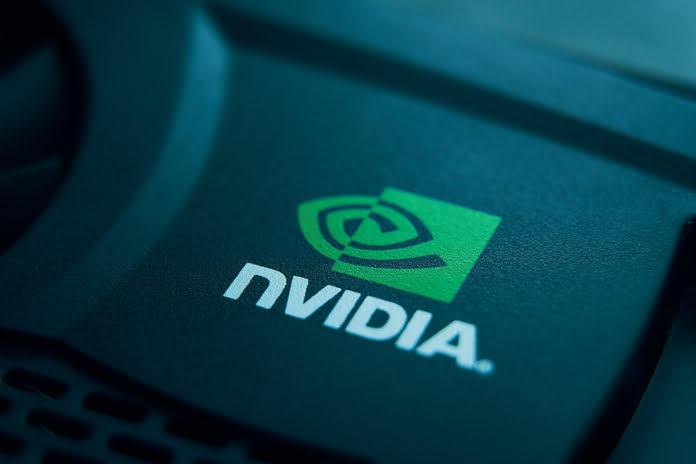The semiconductor industry is undergoing a major transformation, with Nvidia Corporation (NASDAQ:NVDA) leading the charge. The Santa Clara-based chip giant has seen unprecedented growth, fueled by advancements in artificial intelligence (AI) and data center technologies. Analysts are now predicting that Nvidia revenue growth could reach $200 billion in 2025. Let’s dive into the key drivers behind this forecast.
Nvidia’s AI Dominance Drives Revenue Growth
Nvidia has become synonymous with AI innovation. CEO Jensen Huang recently unveiled the company’s next-generation GeForce RTX GPUs, powered by the Blackwell architecture. Huang called Blackwell the “engine of AI,” marking it as a game-changer for developers, gamers, and creative professionals.
The new GPUs are expected to contribute significantly to Nvidia’s revenue. Analysts project that this launch alone could add billions to the company’s top line, pushing Nvidia revenue growth toward the $200 billion mark.
Financial Performance Highlights
Nvidia has been reporting record-breaking financial results, solidifying its position as a leader in the semiconductor industry. In the third quarter of fiscal 2024, the company posted $35.1 billion in revenue, beating Wall Street estimates of $33.2 billion. Earnings per share came in at $0.81, exceeding expectations of $0.75.
Over the past decade, Nvidia has achieved compound annual growth rates (CAGRs) of 37.84% in revenue and 59.72% in earnings. These impressive metrics highlight the company’s ability to capitalize on emerging trends and maintain strong financial health.
Net cash from operating activities rose to $17.6 billion, compared to $7.3 billion in the previous year. Nvidia ended the quarter with a robust cash balance of $38.5 billion and no short-term debt, providing ample financial flexibility to invest in future growth.
Key Growth Drivers for Nvidia Revenue
Nvidia’s dominance in the AI chip market is a major driver of its revenue growth. The world’s leading cloud service providers, including Amazon (NASDAQ:AMZN), Microsoft (NASDAQ:MSFT), Google (NASDAQ:GOOGL), and Meta (NASDAQ:META), are expected to increase their data center spending by 50% year-over-year, according to Morgan Stanley.
With Nvidia holding a 90% market share in AI accelerators, it stands to benefit significantly from this surge in capital expenditures. The company’s Blackwell GPUs deliver up to 2.5 times faster performance in AI training and up to 15 times higher inference speeds compared to previous models. This performance boost ensures broad adoption across data centers and enterprises.
Beyond hardware, Nvidia’s software ecosystem, including its CUDA platform and InfiniBand networking, provides a competitive edge. The recently introduced Nvidia Inference Microservices enable rapid deployment of AI models, cutting deployment times from weeks to minutes. This integrated approach enhances customer retention and accelerates revenue growth.
Upcoming Innovations to Watch
Looking ahead, Nvidia is preparing to launch its Rubin platform in 2025 or 2026. This next-generation platform is expected to further strengthen Nvidia’s leadership in AI and high-performance computing.
In addition, Nvidia’s H100 Tensor Core GPUs and the upcoming MI300X processors are set to play crucial roles in advancing AI and machine learning capabilities. These products are critical for developing sovereign AI systems for governments and enterprises.
Nvidia’s automotive business is also poised for growth. The company’s DRIVE platform is being adopted by major automakers, including Toyota (NYSE:TM). These partnerships could help Nvidia capture a significant share of the autonomous vehicle market, further boosting revenue.
Analyst Opinions on Nvidia Revenue Growth
Wall Street remains optimistic about Nvidia’s future. The consensus rating for Nvidia stock is a “Strong Buy,” with an average price target of $175.55, suggesting a 25.3% upside from its current price.
Out of 43 analysts covering Nvidia stock, 36 rate it a “Strong Buy,” three rate it a “Moderate Buy,” and four recommend holding the stock.
Conclusion: Why Nvidia Revenue Growth Matters
Nvidia’s ability to drive revenue growth through innovation, strategic partnerships, and a comprehensive AI ecosystem positions it well for long-term success. With analysts forecasting revenue to hit $200 billion by 2025, Nvidia remains a compelling investment in the semiconductor space.
While the stock’s premium valuation may give some investors pause, Nvidia’s consistent execution and leadership in AI technology make it hard to bet against this tech giant. As the demand for AI-driven solutions continues to grow across industries, Nvidia is well-positioned to capture the majority of this market and sustain its impressive revenue growth trajectory.
Featured Image: Megapixl









